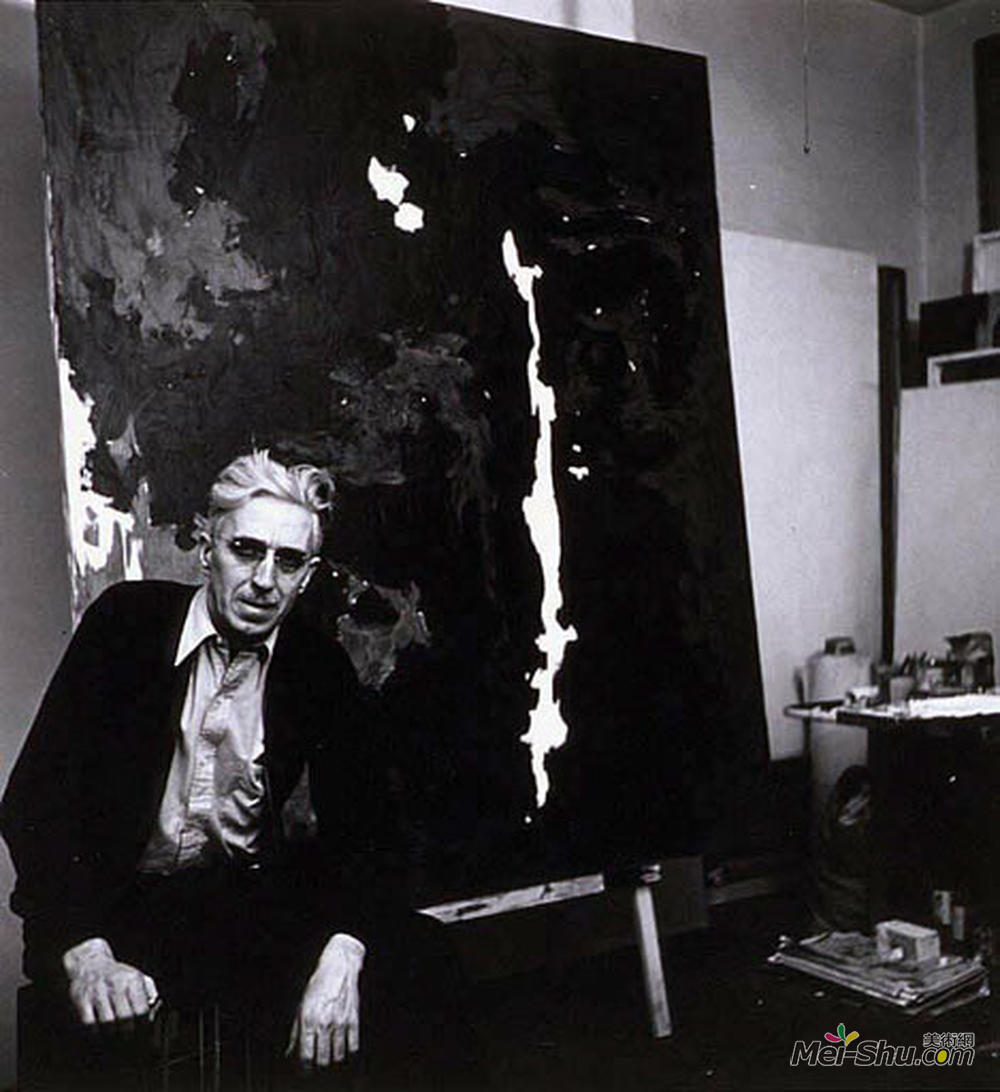
斯蒂尔(Clyfford Still)
艺术家: 斯蒂尔
生于: 1904年11月30日;美国格兰丁
卒于: 1980年6月23日;美国纽约
国籍: 美国
流派: 抽象表现主义
领域: 绘画
Clyfford仍然是一位美国画家。他是最具独创性和影响力的第一代抽象表现主义者之一,经常被认为比他的同事更早地从具象绘画转向抽象绘画。
Still 1904年出生于北达科他州的Grandin,在华盛顿州的斯波坎度过了他的童年。加拿大阿尔伯塔南部的鲍艾兰和敦。虽然抽象表现主义被认定为纽约运动,但Still&39;的成型作品是在西海岸的各个教学岗位上创作的。他在这一时期的作品的特点是富有表现力的比喻风格,用于描绘人、建筑物、工具和农场生活的机械特征。到了20世纪30年代末,他开始简化他的形式,因为他从具象绘画走向抽象。1941年,他仍旧搬迁到旧金山湾地区,在那里,他在各种军工行业工作之后,成为加州美术学院(现在称为旧金山艺术学院)的一名非常有影响力的教授。他从1946-1950年间在那里教书,就在这个时候,斯蒂尔·安普·普·普·普·普·普·普·普·普·普·普·普·普·普·普·普·普·普·普·普·普·普·普·普·普·普·普·普·普·普·普·普·普·普·普·普·普·普·普·普·普EnHeim&S. 39;本世纪画廊和Betty Parsons画廊的艺术。罗斯科把他介绍给了Peggy Guggenheim,他在1946年初的一个世纪美术馆里为他举办了一次个人画展。那年晚些时候,这位艺术家回到了旧金山,他在那里教了四年,在加利福尼亚美术学院。20世纪50年代的大部分时间里,他都住在纽约,那是抽象表现主义的巅峰时期,也是他对艺术世界越来越挑剔的时候。20世纪50年代初,仍然与商业画廊断绝了联系,1961年搬到马里兰州威斯敏斯特附近的一个农场,使自己远离了艺术界。他和他的第二任妻子帕特丽夏一直呆在马里兰州,直到1980去世。在他去世后,所有未进入公共领域的作品都被封锁在公众和学术视野之外,从而封锁了与20世纪美国最重要的画家之一的接触。他于1978年成为美国艺术与文学院院士,并于1975年获得斯科夫黑根绘画奖章,于1972年获得绘画功绩奖。主要是指在不同的地层中并置不同的颜色和表面。与马克·罗斯科或巴内特·纽曼以相对简单的方式组织色彩不同(罗斯科以模糊矩形的形式,纽曼以细线条在广阔的色彩领域中),Still'的安排不太规则。
Artist :Clyfford Still
Additional Name :Clyfford Still
Born : Grandin, United States
Died : New York, United States
Nationality :American
Art Movement :Abstract Expressionism
Clyfford Still was an American painter. He was one of the most original and influential first-generation Abstract Expressionists, being often credited for having shifted from representational painting to abstraction earlier than his colleagues.
Still was born in 1904 in Grandin, North Dakota and spent his childhood in Spokane, Washington and Bow Island in southern Alberta, Canada. Although Abstract Expressionism is identified as a New York movement, Still's formative works were created during various teaching posts on the West Coast. His work of this period is marked by an expressive figurative style used in depictions of the people, buildings, tools and machinery characteristic of farm life. By the late 1930s, he began to simplify his forms as he moved from representational painting toward abstraction. In 1941 Still relocated to the San Francisco Bay area where, following work in various war industries, he became a highly influential professor at the California School of Fine Arts, now known as the San Francisco Art Institute. He taught there from 1946-1950 - it was during this time when Still "broke through" to his mature style.
Still visited New York for extended stays in the late 1940s and became associated with two of the galleries that launched the new American art to the world — Peggy Guggenheim's The Art of This Century Gallery and the Betty Parsons gallery. Rothko introduced him to Peggy Guggenheim, who gave him a solo exhibition at her Art of This Century gallery in early 1946. Later that year, the artist returned to San Francisco, where he taught for the next four years at the California School of Fine Arts. He lived in New York for most of the 1950s, the height of Abstract Expressionism, but also a time when he became increasingly critical of the art world. In the early 1950s, Still severed ties with commercial galleries and in 1961 moved to a farm near Westminster, Maryland, removing himself further from the art world. He remained in Maryland with his second wife, Patricia, until his death in 1980. Following his death, all works that had not entered the public domain were sealed off from both public and scholarly view, closing off access to one of the most significant American painters of the 20th century. Still received the Award of Merit for Painting in 1972 from the American Academy of Arts and Letters, of which he became a member in 1978, and the Skowhegan Medal for Painting in 1975.
Still was also considered one of the foremost Color Field painters - his non-figurative paintings are non-objective, and largely concerned with juxtaposing different colors and surfaces in a variety of formations. Unlike Mark Rothko or Barnett Newman who organized their colors in a relatively simple way (Rothko in the form of nebulous rectangles, Newman in thin lines on vast fields of color), Still's arrangements are less regular.